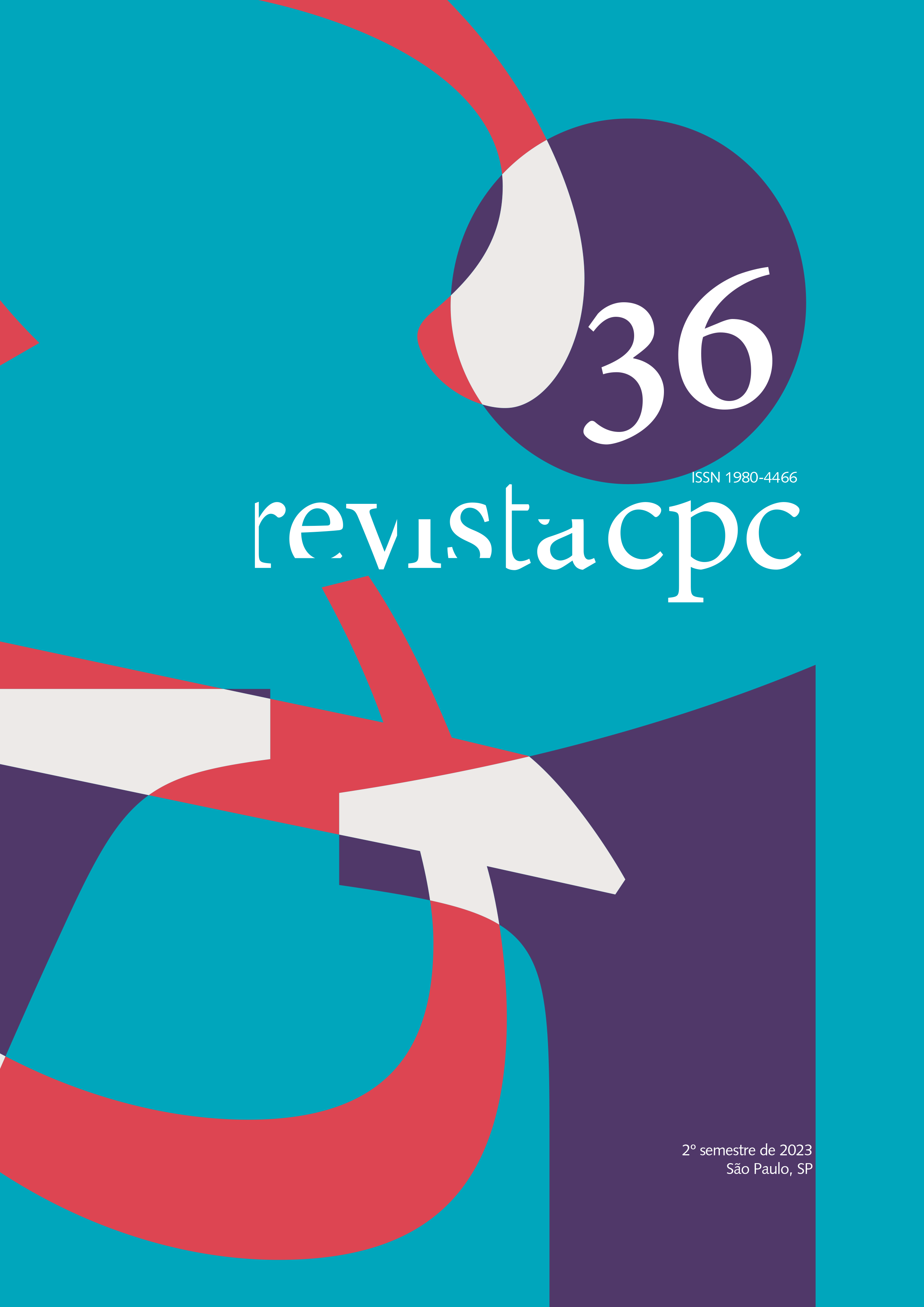Lighting and cultural heritage buildings: the case of Convento da Penha, Vila Velha, Espírito Santo, Brazil
DOI:
https://doi.org/10.11606/issn.1980-4466.v18i36p153-186Keywords:
Artificial lighting, Religious buildings, Built cultural heritageAbstract
Lighting is an essential part of the project, including in historic buildings. An adequate lighting project, effectively adjusted to the demands, values of the place and also its surroundings, contributing to its preservation. The article aims to understand the design assumptions adopted for the monumental lighting of buildings and architectural ensembles of cultural heritage, and the role of lighting in conservation. The object of study is the Convento da Penha, in Vila Velha, Espirito Santo, Brazil, a 16th century friary, which had its lighting redone in 2018. This qualitative research was based on the case study methodology, in which data were collected from archival documents, interviews with those involved in the project and on-site observations. Thus, it was possible to understand the lighting design process, and to analyze it according to the three functions identified as inherent to conservation: sustainability, communication and the enhancement of cultural significance of places. The sustainability of applied design practices aims to ensure the cultural significance of the cultural properties for contemporary society, without compromising future generations, allowing them to make their own readings. Communication has the role of highlighting the main characteristics of cultural properties, guiding the observer's reading and enabling the historical understanding of the monument. Valuation is the result of the previous ones, when well applied, making its use feasible, strengthening the community's interest in the conservation of the place. Guidelines are presented for future lighting design processes aimed at buildings with an interest in heritage conservation.
Downloads
References
BRANDI, C. Teoria da restauração. Cotia: Ateliê, 2004.
CONVENTO da Penha está entre os dez melhores pontos turísticos do Brasil. Folha Vitória, Vitória, 2018. Disponível em https://www.folhavitoria.com.br/geral/noticia/10/2018/Conventoda-penha-esta-entre-os-dez-melhores-pontos-turisticos-do-brasil. Acesso em: 20 jul. 2020.
ESPÍRITO SANTO (Estado). Secretaria de Estado da Cultura. Conselho Estadual de Cultura. Arquitetura: patrimônio cultural do Espírito Santo. Vitória: SECULT, 2009. Disponível em:https://tinyurl.com/ewxu3trh. Acesso em: 20 nov. 2021.
FESTA da Penha ganha brilho especial com o Convento mais iluminado. A Gazeta Online, Vitória, 26 abr. 2019. Disponível em: https://tinyurl.com/3b3x2frh. Acesso em: 28 ago. 2021.
INSTITUTO DO PATRIMÔNIO HISTÓRICO E ARTÍSTICO NACIONAL. Portaria n. 420, de 22 de dezembro de 2010. Dispõe sobre os procedimentos a serem observados para a concessão de autorização para realização de intervenções em bens edificados tombados e nas respectivas áreas de entorno. Rio de Janeiro, 2010. Disponível em: https://tinyurl.com/mry5su8f. Acesso em: 13 jan. 2021.
INTERNATIONAL COUNCIL ON MONUMENTS AND SITES – ICOMOS. International Charter for the Conservation and Restoration of Monuments and Sites (The Venice Charter 1964). Charenton-le-Pont, França, 1965. Disponível em: https://tinyurl.com/fr5xbtwp. Acesso em: 29 nov. 2021.
ITÁLIA. Ministério da Instrução Pública. Circular Nº 117, de 6 de abril de 1972. Carta do restauro. Disponível em: https://tinyurl.com/4my6b27m. Acesso em: 20 out. 2021.
LUCI ASSOCIATION. LUCI Charter on Urban Lighting: Promoting a Culture of Sustainability in Lighting. Lyon: Lighting Urban Community International, 2015. Disponível em: https://tinyurl.com/3c6329sk. Acesso em: 10 out. 2020.
MIGUEZ, J. C. O Potencial cenográfico da iluminação de monumentos e fachadas. Revista Lume Arquitetura – Especial LA_PRO, São Paulo, v. 3. p. 28-32, maio 2005.
MOISINHO FILHO, E. de F. Patrimônio cultural e iluminação urbana: diretrizes de intervenção luminotécnica no Centro Histórico de São Cristóvão, Sergipe. 2010. 332 f. Dissertação de Mestrado. Curso de Pós-Graduação em Arquitetura e Urbanismo da Universidade Presbiteriana Mackenzie, São Paulo, 2010.
MUÑOZ VIÑAS, S. Teoria contemporánea de la Restauración. Madrid: Sintesis, 2003.
NASCIMENTO, F. B.; SCIFONI, S. A paisagem cultural como novo paradigma para a proteção do patrimônio cultural: a experiência do Vale do Ribeira – SP. Revista CPC, São Paulo, n. 10, p. 29-48, maio/out. 2010.
OSRAM. Manual luminotécnico prático. [S. l.], 2005.
ROCHA, J. C. Cor luz, cor pigmento e os sistemas RGB e CMY. Revista Belas Artes, São Paulo, n. 3, maio/ago. 2010. Disponível em: https://tinyurl.com/4xsuyh4w. Acesso em: 7 set. 2020.
TORRES, R. W. Luminotecnia e patrimônio edificado: o caso do Convento da Penha, Vila Velha, Espírito Santo. 2022. Dissertação (Mestrado Profissional em Engenharia das Construções) – Escola de Minas, Universidade Federal de Ouro Preto, Ouro Preto, 2022. Disponível em: https://tinyurl.com/mphyrn87. Acesso em: 29 nov. 2023.
VIDAL, A. A. Luces y sombras en la iluminación monumental. In: ENCONTRO INTERNACIONAL ILUMINAÇÃO EM MONUMENTOS E ZONAS HISTÓRICAS. 2012, Mosteiro de Alcobaça, Portugal. Actas..., p. 14-18. Disponível em: https://tinyurl.com/3k4tu42c. Acesso em: 23 jun. 2020.
VILA VELHA (ES). Edital de chamamento público nº 014/2017. Realização de estudos e execução de projeto para rede de iluminação pública do Convento da Penha. Disponível em: https://tinyurl.com/4b9f68mv. Acesso em: 24 abr. 2020.
VOCÊ conhece a Associação dos Amigos do Convento? Convento da Penha. Vila Velha, 2020. Disponível em: https://tinyurl.com/436eekzs. Acesso em: 30 abr. 2021.
Downloads
Published
Issue
Section
License
Copyright (c) 2023 Rebeca Wright Torres, Cláudia Maria Arcipreste, Tito Flávio Rodrigues de Aguiar

This work is licensed under a Creative Commons Attribution-NonCommercial-ShareAlike 4.0 International License.
- Os autores mantêm os direitos autorais e concedem à revista o direito de primeira publicação, com o trabalho simultaneamente licenciado sob a Licença Creative Commons Attribution que permite o compartilhamento do trabalho com reconhecimento da autoria e publicação inicial nesta revista.
- Os autores têm autorização para assumir contratos adicionais separadamente, para distribuição não exclusiva da versão do trabalho publicada nesta revista (ex.: publicar em repositório institucional ou como capítulo de livro), com reconhecimento de autoria e publicação inicial nesta revista.
- Os autores têm permissão e são estimulados a publicar e distribuir seu trabalho on-line (ex.: em repositórios institucionais ou na sua página pessoal) a qualquer ponto antes ou durante o processo editorial, já que isso pode gerar alterações produtivas, bem como aumentar o impacto e a citação do trabalho publicado (Veja O Efeito do Acesso Livre).










